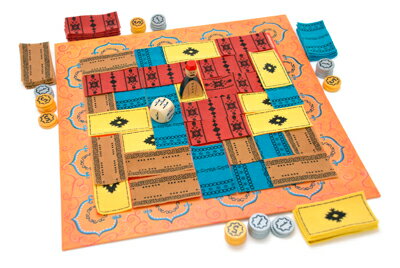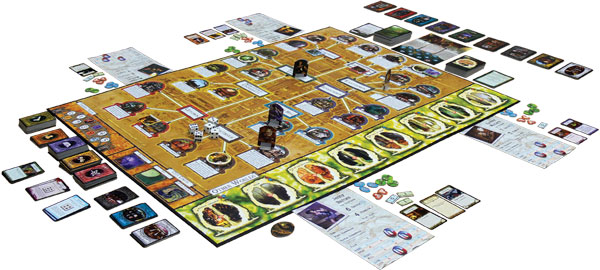
'I have maaaaany carpets!'
Type: Strategy / Board
Players: 2 to 4
Players: 2 to 4
Time to explain to others: About 1 min
Time to play: About 20 minutes
Difficulty: To play 1/10, Game difficulty 4/10
Portability: Medium, some tokens
Overall: 8/10
Overall: 8/10
In the soukhs of Marrakesh, the word comes trough the dusty narrow alleyways: a new caravan is arriving, loaded with gold from the south, silver from the east and metals from the north. They want but one thing, the thing north Africa is famous for above all else.
Carpets.
Ahead of the caravan, they send an agent, that will select the best carpets and give the exclusive rights to trade to the best seller. So the different artisans have but moments to make sure theirs are the best and most visible carpets!
Marrakesh is a lovely simple game I found quite by accident. It breaks down to two simple actions: a) roll a die, move the 'agent' that number of places, and b) lay down a carpet (lovely rectangular pieces of felt) touching the agents' place.
You can (and should!) cover opponents' carpets (to make sure yours are the most visible ones), and if the agent ends up in an opponents' carpet on your movement turn (depends on the dice, remember?), you need to pay that opponent an amount of gold proportional to the area occupied by that opponents' carpets.
When the last carpet is put down, all gold is counted, and every bit of exposed carped of a colour wins 1 extra gold. Whoever has more gold, is the winner!
This is a simple, fun, quick and engaging game. It plays fast, you delight in covering your opponents' work, and a bad decision might cost you the game.
Rui's conclusion: A highly thematic, quick and very simple game. Highly recommended to young'uns and newbies. Perfect dinner party or games night game!















